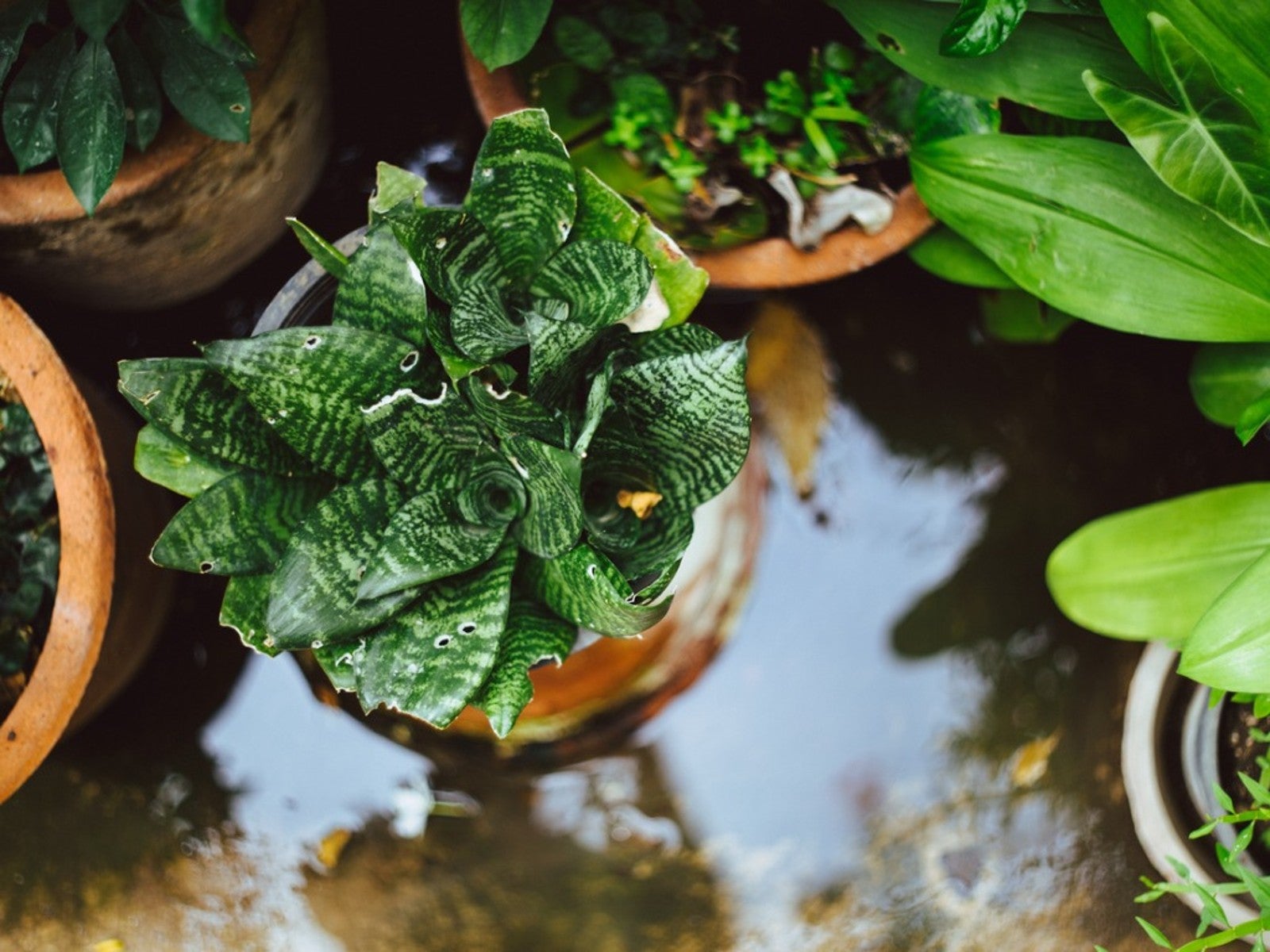How To Protect Potted Plants From Heavy Rain


Water is essential for all plant growth. While this may seem obvious, the amounts of water a plant receives is important. Not every plant is aquatic, so excess rain can cause problems. Potted plants in rain are especially sensitive, even those in containers with good drainage. Different soil types, species of plant, and even the type of container will affect the outcomes when leaving potted plants in rain.
Overwatered plants have the tendency to become stressed, and certain bacteria and fungi thrive in such conditions. Even the expert gardener has been guilty of overwatering, but when container plants are outdoors, it is the result of too much of Mother Nature's tears. We can't control how much rain occurs, but you can learn how to protect potted plants from heavy rain.
Is Rainwater Safe?
Excess moisture causes fungal and pest issues, but it also leaches soil of necessary nitrogen and other nutrients and minerals. In most cases, leaving potted plants in rain isn't a problem. Natural rainwater isn't unsafe, but the amount may be. Too much water can cause wilting, yellowed leaves, failure to produce new growth, mossy green soil, and general poor health. Plants need to breath and when they are in a boggy environment the roots cannot take up oxygen and will suffocate. Essentially the plant is drowning. It's not the variety of water that causes issue, but rather the extreme amount of moisture.
How to Protect Plants from Heavy Rain
In many instances, the easiest way to protect a container bound plant is to move it under the eaves. For large plants, this isn't always feasible. But root rot is a danger when standing water forms on the surface of the soil and the medium is muddy. In order to prevent potted plants in rain from suffering, you can temporarily cover the exposed surface with a barrier such as plastic. This should not be left on after the rain passes but it should help too much moisture from building up. For plants with good drainage holes, make sure any saucers are emptied after the rain event. This will reduce uptake of excess moisture.
Preventing Overwatered Plants
To keep plants in containers from holding onto too much water, make sure your planting medium is well draining. Plants that like to stay on the dry side will benefit from a soil mixture of top soil with plenty of sand, pebbles, or rocks added.
Cactus soil is a good choice for succulents as it will not hold extra moisture. Drainage holes in containers are essential. Saucers can collect spare water, and putting containers on pot feet to raise containers increases the ability to drain. Using unglazed clay pots allow easy evaporation of superfluous moisture. Root bound pots will hold more water than those that can drain more freely. Make sure plants are repotted as needed with a porous soil mixture.
Sign up for the Gardening Know How newsletter today and receive a free copy of our e-book "How to Grow Delicious Tomatoes".

Bonnie Grant is a professional landscaper with a Certification in Urban Gardening. She has been gardening and writing for 15 years. A former professional chef, she has a passion for edible landscaping.